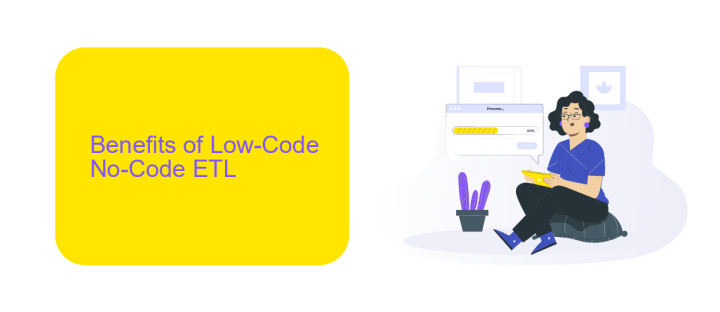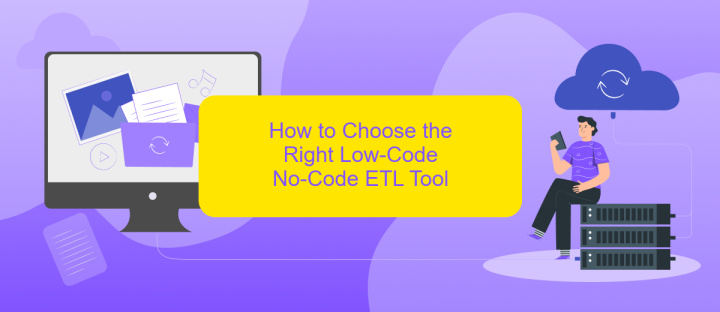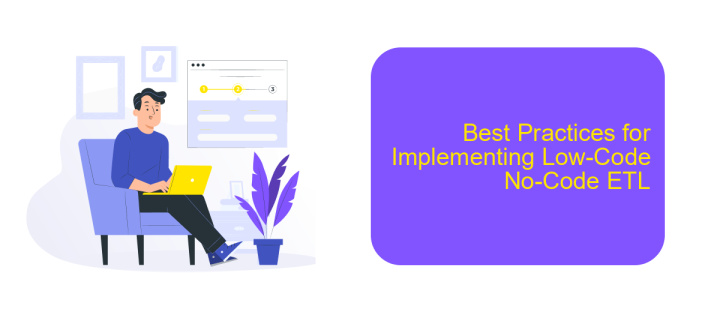Low-Code No-Code ETL
In today's fast-paced digital landscape, businesses are increasingly turning to low-code and no-code solutions to streamline their ETL (Extract, Transform, Load) processes. These innovative platforms empower users with minimal coding knowledge to efficiently manage data workflows, reducing development time and costs. This article explores how low-code and no-code ETL tools are revolutionizing data integration and democratizing the data management landscape.
Introduction to Low-Code No-Code ETL
Low-Code No-Code ETL (Extract, Transform, Load) solutions are revolutionizing the way businesses handle data integration and processing. These platforms enable users to design and deploy ETL processes with minimal or no coding, making data management accessible to non-technical users. This democratization of data handling allows organizations to streamline workflows and reduce the dependency on IT departments.
- Ease of Use: Intuitive interfaces allow users to create ETL pipelines without programming skills.
- Cost Efficiency: Reduces the need for specialized IT staff and expensive custom development.
- Flexibility: Easily adaptable to changing business requirements and data sources.
- Speed: Accelerates the deployment of data integration processes.
One notable example of a Low-Code No-Code ETL tool is ApiX-Drive. This service simplifies the integration of various applications and data sources, enabling users to automate data workflows effortlessly. By leveraging such platforms, businesses can focus more on insights and decision-making rather than the technical complexities of data integration.
Benefits of Low-Code No-Code ETL

Low-Code No-Code ETL platforms offer significant advantages, making data integration and transformation more accessible to a broader audience. These platforms eliminate the need for extensive coding knowledge, allowing business users and analysts to design and implement ETL processes without relying heavily on IT departments. This democratization of data management accelerates project timelines and reduces costs associated with traditional development cycles.
Moreover, Low-Code No-Code ETL tools often come with pre-built connectors and intuitive interfaces, simplifying the integration of various data sources. For instance, services like ApiX-Drive enable seamless connections between multiple applications, automating data workflows with minimal effort. This not only enhances productivity but also ensures data accuracy and consistency across systems. By leveraging such platforms, organizations can focus more on deriving insights from their data rather than getting bogged down by technical complexities.
How to Choose the Right Low-Code No-Code ETL Tool

Choosing the right Low-Code No-Code ETL tool is crucial for efficiently managing your data workflows. With numerous options available, it's essential to evaluate them based on specific criteria to ensure they meet your business needs.
- Ease of Use: Ensure the tool has an intuitive interface that allows non-technical users to create and manage data pipelines effortlessly.
- Integration Capabilities: Check if the tool supports integration with your existing systems and databases. For instance, ApiX-Drive offers seamless integration with various applications, making it a versatile choice.
- Scalability: Consider whether the tool can handle your current data volume and scale as your business grows.
- Cost: Evaluate the pricing model to ensure it fits within your budget without compromising on essential features.
- Support and Community: Look for tools that provide robust customer support and have an active user community for troubleshooting and advice.
By carefully considering these factors, you can select a Low-Code No-Code ETL tool that not only meets your immediate requirements but also supports your long-term data management strategy.
Best Practices for Implementing Low-Code No-Code ETL

Implementing Low-Code No-Code ETL solutions can significantly enhance data management efficiency. However, to maximize their benefits, it is essential to follow best practices. Begin by thoroughly understanding your data sources and requirements. This ensures that the ETL processes you design are aligned with your business goals.
Next, choose a reliable Low-Code No-Code platform that supports scalability and flexibility. Platforms like ApiX-Drive can be instrumental in automating data integration tasks without extensive coding knowledge. They provide user-friendly interfaces and robust features to streamline the ETL process.
- Ensure data quality and consistency by implementing validation rules.
- Regularly monitor and maintain your ETL workflows to adapt to changing data needs.
- Utilize built-in error handling and logging features to troubleshoot issues quickly.
- Document your ETL processes for future reference and compliance purposes.
Lastly, continuously evaluate the performance of your ETL processes and make improvements as necessary. By adhering to these best practices, you can leverage Low-Code No-Code ETL solutions to effectively manage and integrate your data, driving better business outcomes.


Case Studies and Success Stories
One notable success story in the realm of Low-Code No-Code ETL comes from a mid-sized e-commerce company struggling with data integration between their sales platform and CRM. By leveraging a low-code ETL tool, they managed to streamline their data processes without needing extensive coding knowledge. The implementation reduced their data transfer time by 50%, allowing the team to focus more on strategic tasks rather than manual data handling.
Another compelling case involves a healthcare provider using ApiX-Drive to integrate various patient management systems seamlessly. The no-code platform enabled them to set up complex data workflows in a fraction of the time it would have taken with traditional coding methods. As a result, they saw a 30% improvement in data accuracy and a significant reduction in administrative overhead, ultimately enhancing patient care and operational efficiency.
FAQ
What is Low-Code No-Code ETL?
Who can benefit from Low-Code No-Code ETL tools?
How secure are Low-Code No-Code ETL platforms?
Can Low-Code No-Code ETL tools handle large volumes of data?
What are some common use cases for Low-Code No-Code ETL?
Routine tasks take a lot of time from employees? Do they burn out, do not have enough working day for the main duties and important things? Do you understand that the only way out of this situation in modern realities is automation? Try Apix-Drive for free and make sure that the online connector in 5 minutes of setting up integration will remove a significant part of the routine from your life and free up time for you and your employees.

